Fire alarm requirements for one- and two-family dwellings, hotels and dormitories, apartments, residential board and care facilities, inpatient and outpatient healthcare, and daycare occupancies
In the previous installment of this series, we explained what NFPA 101: Life Safety Code requires for fire alarm systems in buildings or parts of buildings used for education, detention, assembly, business, industrial processes, and more. In this piece, we cover fire alarm needs in the following occupancies:
- One- and two-family dwellings
- Lodging and rooming houses
- Hotels and dormitories
- Apartment buildings
- Residential board and care facilities
- Inpatient and outpatient healthcare facilities
- Day care buildings
Readers may find it helpful to explore Part 1, where we discuss how alarms may be triggered (system initiation), what those alarms may sound and look like (occupant notification), and whether or not a signal is sent to professionals tasked with contacting emergency services (monitoring).
If you’re not sure which occupancy type your building falls under, take a look at this article—or at NFPA 101, section 6.1. Notably, new structures and existing structures often follow different rules, as this video from the NFPA explains:
You can also view our selection of fire alarm bells, bell signs, and alarm-activating flow and pressure switches.
Fire alarm requirements in one- and two-family dwellings and lodging or rooming house occupancies
Houses that shelter as many as two families are considered one- and two-family dwellings, as long as they do not rent rooms to more than three additional guests at one time (NFPA 101, section 6.1.8.1.1). If this home rents rooms to anywhere between four and sixteen outsiders—as in the case of a vacation rental—it would then be classified as a lodging or rooming house (6.1.8.1.2).
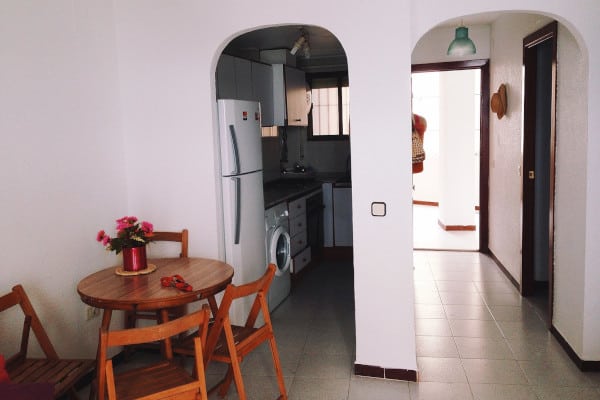
One- and two-family dwellings
These occupancies typically require only the necessary number of alarms to alert sleepers and residents within living areas. Section 24.3.4.1.1 of NFPA 101 requires one- and two-family dwellings to have only an alarm system (no monitoring needed) with audible alarms in the following locations:
- Within every sleeping room
- In the immediate vicinity outside of every sleeping room
- On every level of the building (including basements)
According to section 24.3.4.1.2, one- and two-family dwellings need smoke detection systems that comply with section 9.6. They also need an approved means of occupant notification (for more on what section 9.6 entails and occupant notification, read Part 1). In addition, existing one- and two-family dwellings may use battery-powered smoke alarms instead of the electrically powered models typically required in new dwellings (24.3.4.1.3).
Lodging or rooming house occupancies
In section 26.3.4.1.1, NFPA 101 requires fire alarm systems for lodging or rooming house occupancies. But none of these systems require monitoring. And under section 26.3.4.1.2, existing lodging or rooming houses don’t require fire alarm systems at all if they meet three criteria:
- An existing smoke detection system is installed
- The system includes approved detectors for every sleeping room in accordance with section 9.6.2.10
- The building has at least one pull station per floor to initiate the smoke detection alarm
When these occupancies do feature a fire alarm system, an approved automatic sprinkler system or manual pull station may sound the alarm (26.3.4.2). Notification devices must be installed in accordance with section 9.6.3 (26.3.4.3), with two caveats:
- Visible signals for hearing-impaired people are not required if the proprietor lives in the building and there are five or fewer rooms for rent (26.3.4.3.1)
- A positive alarm sequence—a sort of delayed alarm—is permitted in section 26.3.4.3.2 (for more, read Part 1).
Fire alarm requirements for hotels and dormitories, apartment buildings, and residential board and care occupancies
NFPA 101 applies a different (and more demanding) set of rules to buildings that house people in large numbers—or where residents may not be fully able to care for themselves.
Hotels provide temporary shelter for more than 16 persons and are primarily used by guests who stay only for a brief time (NFPA 101, 6.1.8.1.3). Dormitories—a term that covers everything from fraternities to military barracks—also provide accommodations for at least 17 people (6.1.8.1.4). However, dormitories differ from hotels in that they house people who are not members of the same family in the same room or closely associated rooms.
Apartments are buildings—or parts of buildings—with three or more dwellings (6.1.8.1.5). These spaces have independent bathrooms and, unlike dormitories, individual cooking facilities. Residential board and care occupancies provide sleeping accommodations and care to at least four people (6.1.9.1). These occupants aren’t related (by blood or marriage) to the building’s owner. Examples of residential board and care facilities include:
- Housing for physically or mentally handicapped persons
- Assisted living facilities
- Rehab or mental health facilities
Notably, these examples exclude facilities that offer nursing or acute care.
New hotels and dormitories
In hotels and dormitories, a hazard in one space may threaten others. As such, the NFPA requires additional forms of initiation in hotels and dormitories—not just the manual pull stations found in other residential occupancies.
From the 2018 edition of NFPA 101
28.3.4.2 Initiation. The required fire alarm system shall be initiated by each of the following:
(1) Manual means in accordance with 9.6.2
(2) Manual fire alarm box located at the hotel desk or other convenient central control point under continuous supervision by responsible employees
(3) Required automatic sprinkler system
(4) Required automatic detection system other than sleeping room smoke detectors
Like lodging or rooming houses, new hotels and dormitories must also install notification devices in accordance with section 9.6.3 (28.3.4.3.1). A positive alarm sequence is permitted (28.3.4.3.2). Rooms and suites specifically for hearing-impaired people—and other occupiable areas that aren’t rooms or suites—must provide visible notification appliances (28.3.4.3.3, 28.3.4.3.4). New hotels and dormitories must also provide alarm monitoring and emergency forces notification (28.3.4.3.6).
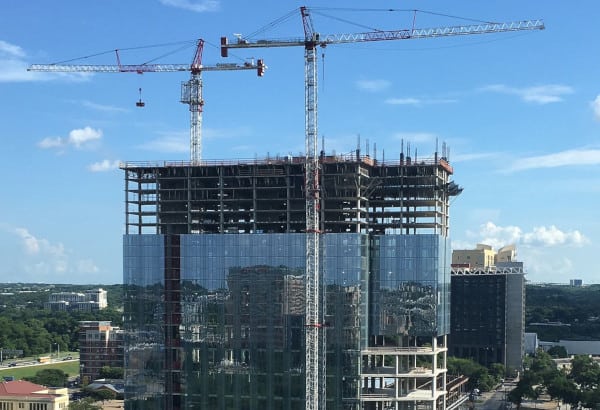
Further, some new hotels or dormitories need alarm annunciation. Annunciation simplifies the task facing first responders by showing which parts of the building are under threat on a fire alarm control panel. (For more details on how to divide a building into zones for annunciation, see section 9.6.7.) According to section 28.3.4.3.5, new facilities must have alarm annunciation if they meet at least one of the following conditions:
- The building is three or more stories high
- The building includes more than 50 guest rooms
Existing hotels and dormitories
The rules for initiation in existing hotels and dormitories are nearly identical to those for new construction. Section 29.3.4.2 requires initiation by:
- A manual fire alarm box at a convenient and constantly supervised location
- An automatic sprinkler system
- An automatic detection system (not sleeping room smoke detectors)
In addition, many of these occupancies also require pull stations in accordance with section 9.6.2. However, if there are other “effective means to activate the fire alarm system”—such as a complete automatic sprinkler or detection system—these pull stations aren’t required.
Notification appliances must be provided in accordance with section 9.6.3 (29.3.4.3.1). Per section 29.3.4.3.2, a positive alarm sequence is permitted, as is a presignal system—which gives on-site staff the chance to investigate the source of the problem before sounding a general fire alarm. And unlike new hotels and dormitories, existing facilities don’t require visual notification appliances for visually impaired individuals.
Existing facilities that aren’t currently configured for monitoring must make provisions to immediately alert the fire department in case of a fire (29.3.4.3.6). They must also include alarm monitoring when it comes time to replace their current fire alarm system (29.3.4.3.7).
Finally, each suite in an existing hotel or dormitory requires at least one approved single-station detector per guest room, living area, and sleeping room (29.3.4.5). Those smoke alarms don’t need to be interconnected, and they don’t need a secondary power source (29.3.4.5.1, 29.3.4.5.2).
Residential board and care facilities
Section 32.1.1.5 divides residential board and care facilities into separate categories of small (sleeping accommodations for 16 or fewer residents) and large (over 16 residents).
Both new and existing small facilities have few requirements for their fire alarm systems. The systems must initiate manually and notify occupants automatically—without delay (32.2.3.4, 33.2.3.4). These systems do not require alarm monitoring.
Large board and care facilities—new and existing—have the same initiation requirements as hotels and dormitories (32.3.3.4.2, 33.3.3.4.2). Those alarm systems are activated by:
- Fire alarm pull stations in accordance with section 9.6.2 (save for existing occupancies with alarms activated by a complete automatic sprinkler or detection system)
- A manual fire alarm box at a convenient and constantly supervised location
- An automatic sprinkler system
- An automatic detection system (excluding sleeping room smoke detectors)
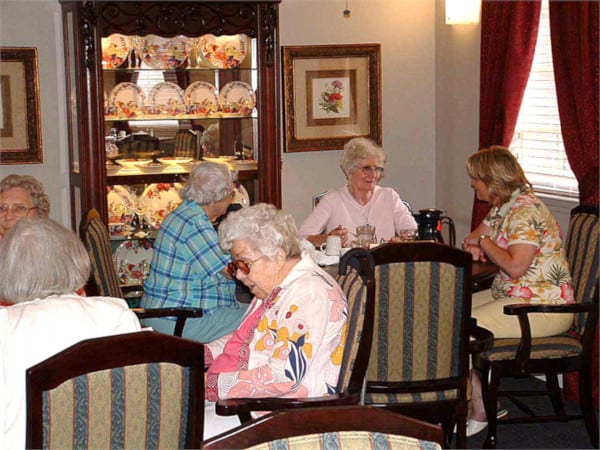
New large board and care facilities require annunciator panels—used to display the approximate location of a fire alarm’s source—while existing ones don’t (32.3.3.4.3). And both new and old occupancies must provide notification in accordance with section 9.6.3, automatically and without delay (32.3.3.4.4, 33.3.3.4.4). However, section 33.3.3.4.4 specifies that notification in existing large facilities must be provided “by internal audible alarm.” When these occupancies are part of a high rise, new large facilities must include PA system evacuation announcements as part of their alarm signals (32.3.3.4.5).
New large facilities also require alarm monitoring that complies with section 9.6.4 (32.3.3.4.6). Section 32.3.3.4.6 adds that smoke detection devices or systems may initiate a positive alarm sequence, as long as it lasts 120 seconds or less. Existing large occupancies may feature these systems (33.3.3.4.6.1). However, when these systems lack monitoring, trained staff members should be continually available to contact the fire department (33.3.3.4.6.2).
Apartment buildings
New apartment occupancies need fire alarm systems unless they meet both of the following conditions:
- They are under four stories high (30.3.4.1.1)
- They have fewer than 12 dwelling units (30.3.4.1.1)
NFPA 101 makes one additional exception: no fire alarm system is required if each dwelling unit is separated from contiguous dwelling units by fire barriers with at least a 1-hour fire-resistance rating and each unit has its own independent exit or a stairway/ramp that ends at ground level (30.3.4.1.2).
Existing apartments follow all of the same provisions, with one slight change: fire barriers need only a 1/2-hour fire-resistance rating (31.3.4.1.2).
Initiation
For both existing and new apartments, initiation of the alarm system must be manual, unless the apartment meets all of the following conditions (30.3.4.2, 31.3.4.2):
- The building has four or fewer stories
- It includes no more than 16 dwelling units
- An approved, supervised automatic sprinkler system is installed throughout
In new apartment buildings with sprinkler systems, activation of the sprinkler system must also initiate the fire alarm system (30.3.4.2.3). Automatic activation may also be required in existing apartment buildings that have:
- Complete approved automatic fire detection and notification systems (31.3.4.2.3)
- Sprinkler protection in select areas (31.3.4.2.4)
- Sprinkler protection throughout (31.3.4.2.5)
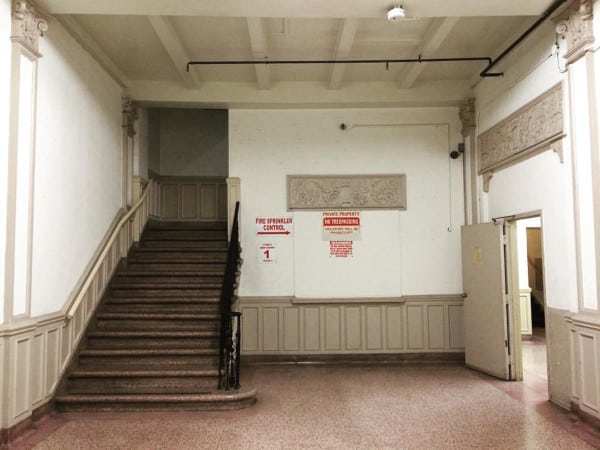
Notification and monitoring
The standard notification methods of section 9.6 apply to new and existing apartments (30.3.4.3, 31.3.4.3). In addition, these sections require visible signals in units for hearing-impaired people, and allow for the use of a positive alarm sequence. Existing apartment buildings may also use existing presignal systems for notification.
These occupancies also need alarm monitoring and emergency forces notification as described in section 9.6.4 (30.3.4.3.5, 31.3.4.3.5). Both new and existing apartment buildings also need a panel that displays the approximate location of an alarm’s source (annunciator panels), unless they have:
- Up to 50 rooms and only one or two stories (30.3.4.3.3, 31.3.4.3.3)
- Up to 16 dwelling units and as many as four stories (30.3.4.3.4, 31.3.4.3.4)
Healthcare and ambulatory healthcare occupancies
Inpatient healthcare facilities (healthcare occupancies) and outpatient healthcare facilities (ambulatory healthcare occupancies) provide care to four or more patients. In these occupancy types, patients’ abilities to protect themselves may be limited by disabilities, age, injury, or other factors. For more precise definitions, see sections 6.1.5.1 and 6.1.6.1.
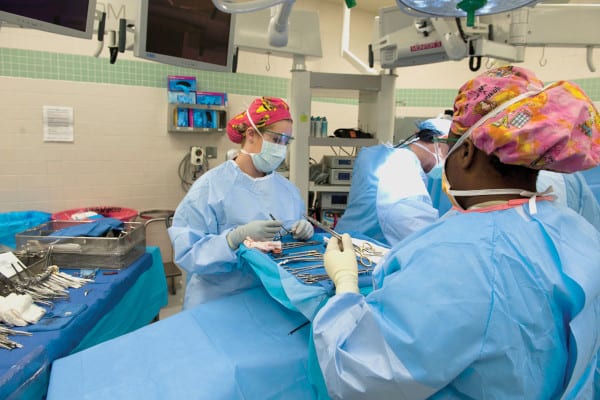
Inpatient facilities
Initiation
For inpatient healthcare facilities, sections 18.3.4.2.1 and 19.3.4.2.1 require fire alarm systems to initiate manually and automatically. Acceptable means include waterflow alarms, detection devices, or detection systems. However, smoke detectors required for these systems do not need to initiate the fire alarm system (18.3.4.2.3, 19.3.4.2.3).
Alarm boxes may be excluded from the exits of patient sleeping areas if all three of the criteria in sections 18.3.4.2.2 or 19.3.4.2.2 are met:
- There’s a manual alarm box at each nurse’s station (or another constantly attended location)
- Travel distance between these boxes don’t exceed those specified by section 9.6.2.5
- The boxes are visible and continuously accessible
Notification and monitoring
Like other occupancies, new and existing inpatient healthcare facilities must comply with notification rules provided in section 9.6.3. However, NFPA 101 allows for a few customizations to notification devices in new inpatient facilities (and identical provisions for existing ones can be found in section 19.3.4.3.1).
From the 2018 edition of NFPA 101
18.3.4.3.1 Occupant Notification. Occupant notification shall be accomplished automatically in accordance with 9.6.3, unless otherwise modified by the following:
(1) Paragraph 9.6.3.2.3 shall not be permitted to be used.
(2)* In lieu of audible alarm signals, visible alarm-indicating appliances shall be permitted to be used in critical care areas.
(3) The provision of 18.3.2.5.3(13)(c) shall be permitted to be used.
Item 1 in this list refers to a provision governing smoke detectors. In essence, section 9.6.3.2.3 says that specific detectors—those used to automatically open doors—don’t need to sound an evacuation alarm. However, NFPA 101 doesn’t let installers working on inpatient facilities make use of this exception. Section 18.3.2.5.3(13)(c), on the other hand, addresses smoke alarms located near cooktops or ranges. These detectors don’t need to trigger a building-wide notification system.
Both new and existing facilities must provide notification in accordance with section 9.6.4 (18.3.4.3.2.1, 19.3.4.3.2.1). However, these sections add that the kitchen smoke detectors mentioned above need not send a signal to emergency forces.
These facilities must also have any activating device perform required emergency control functions automatically (18.3.4.4, 19.3.4.4). Such functions include shutting down ventilation systems, unlocking doors, and other fire safety functions (9.6.5). However, existing inpatient healthcare facilities whose smoke detectors or detection systems have reconfirmation features—meaning that they confirm that a problem still exists after a set period of time—do not need to automatically notify the fire department. Those detectors can delay emergency forces notification for up to 120 seconds of triggering (19.3.4.3.2.2).
Outpatient facilities
New and existing outpatient healthcare facilities have far fewer requirements for their alarm systems—largely because their occupants can more easily evacuate themselves. Systems in these facilities should initiate manually and by any other required detection systems (20.3.4.2, 21.3.4.2). Sections 20.3.4.3 and 21.3.4.3 allow for the use of a positive alarm sequence.
Alarm monitoring in accordance with section 9.6.4 is required for both new and existing occupancies (20.3.4.3.2, 21.3.4.3.2.1). Like existing inpatient facilities, existing outpatient facilities with reconfirmation features on their smoke detectors can have those detectors delay emergency forces notification for as much as 120 seconds after triggering (21.3.4.3.2.2). Finally, any activating device installed as part of the fire alarm system should perform all required emergency control functions automatically (20.3.4.4, 21.3.4.4).
Daycare occupancies
According to section 6.1.4.1, a facility where someone looks after at least four clients (unrelated children or adults) for less than 24 hours a day is considered a day care. Newly constructed daycare facilities are required to have fire alarm systems unless they’re housed in only one room and have a direct, ground-level exit or an exit access balcony (16.3.4.1). Existing daycare facilities can forgo a fire alarm system only if they consist of just one room, whether or not it has such exits (17.3.4.1).
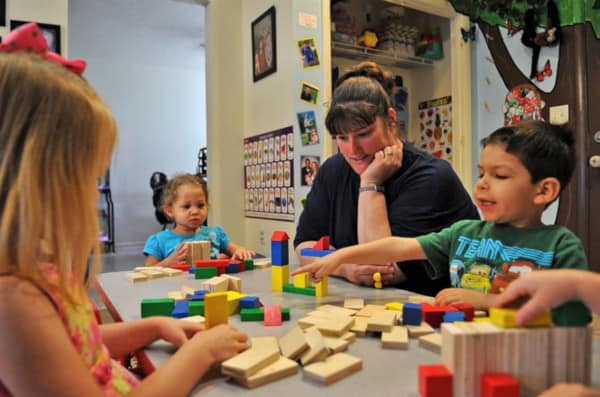
In both new and existing facilities, fire alarm systems must initiate manually and by any required detectors and sprinklers (16.3.4.2, 17.3.4.2). Occupant notification should comply with section 9.6.3, but may employ positive alarm sequence and private operating mode (16.3.4.3, 17.3.4.3).
If it serves more than 100 clients—or if a new fire alarm system is installed—a system protecting an existing daycare center must have emergency forces notification (17.3.4.4). All new facilities, however, must provide automatic notification (16.3.4.4).
Protect your assets, employees, and customers
Even if a building and its material contents can be replaced—and often, they can’t—there’s no making up for the loss of human life after a fire. NFPA 101’s detailed provisions for residential, healthcare, and daycare occupancies serve as a reminder of the careful fire alarm design and implementation steps needed to prevent life-threatening scenarios by giving people time to escape from a fire.
If you need items to bring your building into compliance, browse our selection of fire alarm accessories and other related components, including:
- UL-listed fire alarm bells (from 6 to 10 inches in diameter)
- Fire alarm bell signs
- Flow and pressure switches that send signals to fire alarm control panels when sprinklers activate
Viking pull stations manufactured by Potter Electric Signal Company are also available for pre-order at QRFS. If you have questions about compliance or need help finding a component for your fire protection system, contact us at 888.361.6662 or email support@qrfs.com.
This blog was originally posted at blog.qrfs.com. Check us out at Facebook.com/QuickResponseFireSupply or on Twitter @QuickResponseFS.


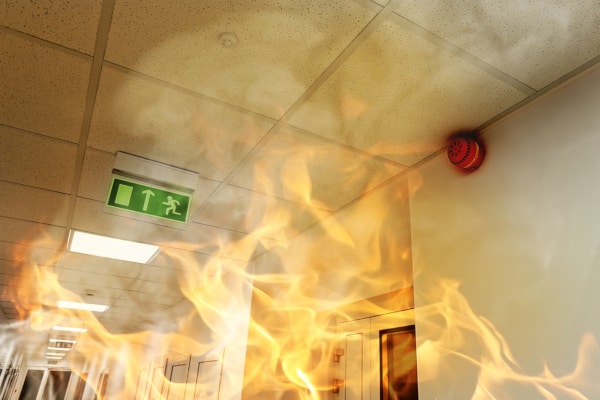
I would like to know the distance between air ventilation systems walls sprinkler heads in doorways for minimum distance of smoke detectors what articles from NFPA 101 or nfap 72 code reference
Matt, thanks for reaching out! The specific measurements will vary based on the specific details of your building and your local code requirements. We recommend working with your authority having jurisdiction (AHJ) or fire marshal to determine specific requirements that meet your local code.
the fire alarm control panel in our building is constantly beeping. We do not have a resident super and the management company is ignoring our calls/emails. Isn’t this dangerous, if there’s a real fire, non of us would be alerted. Advice on how we can be part of the solution?
It may or may not be throwing a signal that something is wrong with the panel. Contacting your local fire marshal and asking them to take a look is a prudent step; if the panel is not maintained properly, the management company will be notified.
Texas: 5 residents who live 24/7 in a one story four bedroom, single family house, turned into a group home for austistic young adults. Does it need a fire alarm system and or a sprinkler system?
Myrella — Unfortunately, we can’t look up local codes and reconcile them with model codes for every request. Your best bet is to contact your local authority having jurisdiction (AHJ; e.g. fire marshal or building code official) to ask about your local requirements. Thanks for reading and best of luck!
what are the minimun requirements for a commercial building? location where tehy should be place?
Erin — Unfortunately, the minimum requirements for “a commercial building” vary quite a bit based on the building, its size, what its used for, etc. Your best course of action is to consult your local fire marshal or a fire protection professional.
Can a battery operated cigarette smoke detector be installed in a resident’s room (long term care facility) , in addition to the regular wired in smoke detector, and fully sprinklered facility without having to comply with all the battery operated smoke detector requirements? Thanks
Jose — The requirements for smoke detectors in light of sprinklers are complex and vary by facility. However, no major codes we are aware of mention or make exceptions for “cigarette smoke detectors.”
What is your interpretation of manual pull stations being required at all exits in a daycare occupancy that is fully sprinklered and outfitted with full smoke detection?
Daren —
We don’t typically provide code interpretations in this comment forum. However, you can try our Ask a Fire Pro service, where a qualified code expert and AHJ will take a look at your question after gathering details about specific situation and provide an informal interpretation. Thanks for reading!